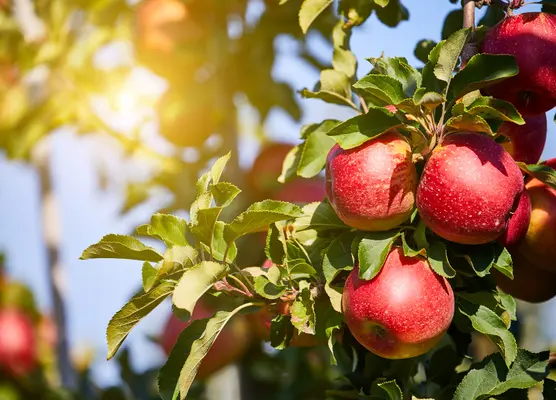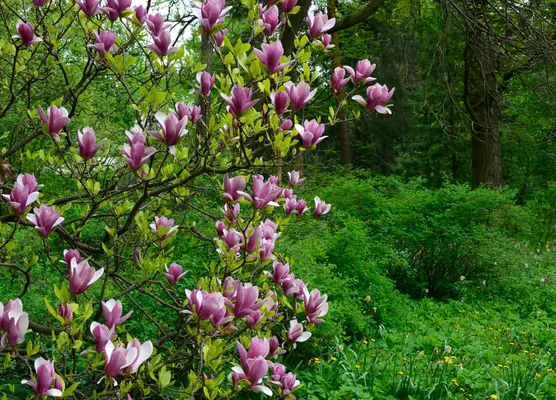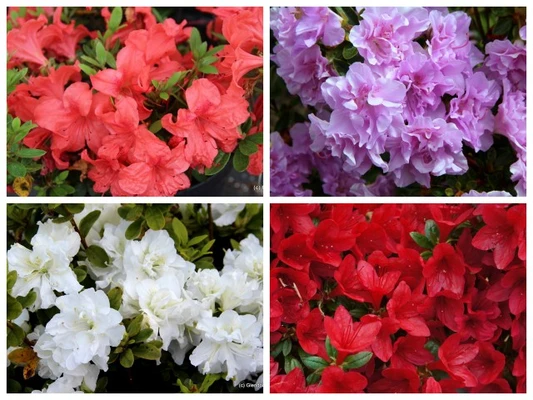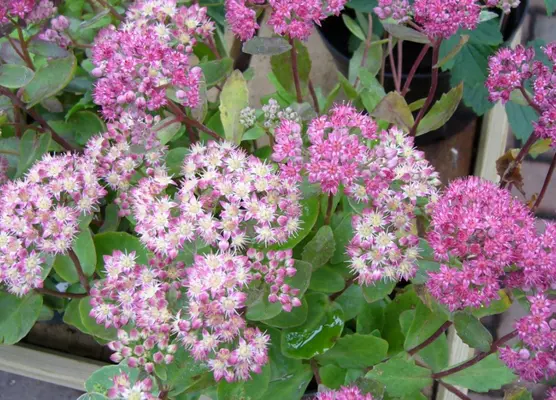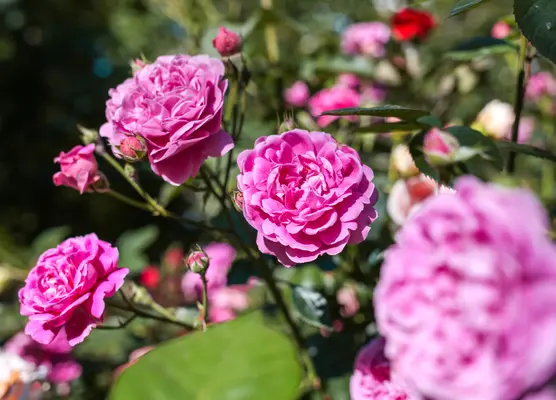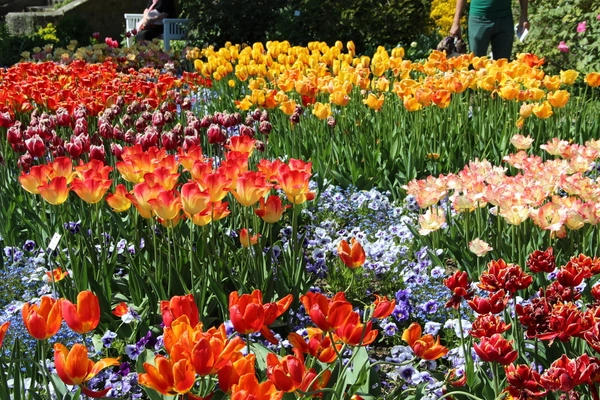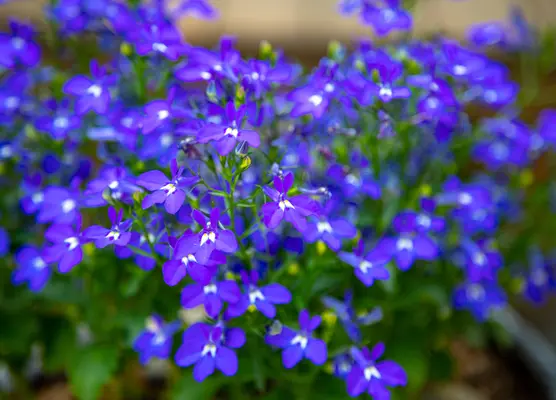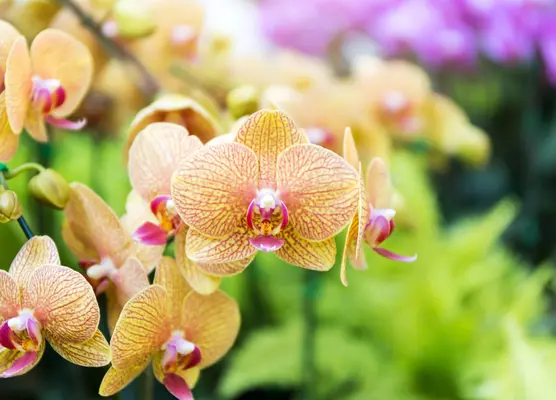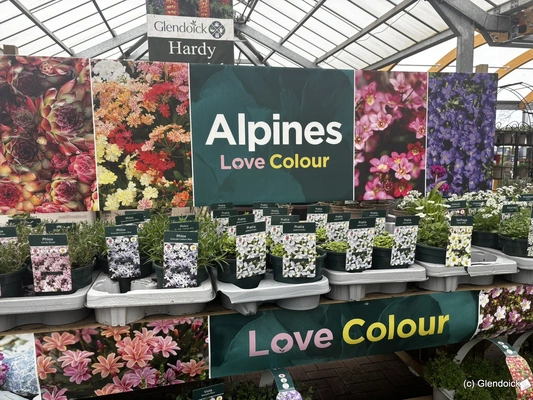Fruit trees and Bushes
Fruit Growing in Scotland
Adapted from Garden Plants for Scotland. Ken Cox writes:
Glendoick Garden Centre Tree Fruit: Apples, pears, plums and cherries
Apples, pears and plums can all be excellent in Scotland, given the right growing conditions, but do make sure that you choose the right varieties. Some just won’t fruit well in Scotland, while others seem to do better in one part of the country than another. The further North you go, the more shelter that is required. Most fruit north of Aberdeen, away from the favourable Moray Firth, is grown on walls or with other shelter.
In a small garden or confined space, then cordons (single stems planted at 45 degrees on a wall) allow several varieties to be grown. All fruit trees should be staked when young, until the trunk is strong enough to withstand wind and heavy fruiting; trees on dwarf rootstocks (see below) should be staked, even when mature. Alternatively plant Ballerina apple trees (see below)
Fruit tree pruning is often considered a mystery but it is not that complex. Apples and pears can be pruned any time, though traditionally this is done when dormant. When trees are young, pruning is done to create a balanced goblet-shaped head on the tree. Subsequent pruning is used to keep the tree in bounds and to rejuvenate from time to time. Fruit on dwarf rootstocks should only be lightly trimmed. Stone fruit trees (cherries, plums, etc.) should be pruned lightly in late spring or summer. Avoid winter pruning which can let in disease. One advantage of summer pruning is that you can thin and/or remove diseased fruit at the same time. Thinning fruit after the natural ‘June drop’ (see Apples, below) helps the tree to maintain energy levels and reduces the tendency to biennial cycles of bumper crop followed by barren crop.
The fungal disease of scab is the scourge of apple and pear growing in Scotland. It causes unsightly greyish blisters on the leaves, branches and the fruit itself. It is worst in wet areas (west coast) and during wet springs and early summers. If you want clean fruit, stick to the most disease-resistant varieties, or spray preventatively against scab with mancozeb or myclobutanil, from when new growth appears until May-June. Organic gardeners can use copper and sulphur sprays. The sometimes fatal disease of bacterial canker affects plums, and fungal canker can affect apples and pears. These diseases are most prevalent in areas of high rainfall and/or sites with poor drainage, so improve drainage and/or select disease-resistant varieties.
Apples
Apples are suited to Scotland, and there are plenty of fine varieties to choose from. Fred Last, in the forward to John Butterworth’s excellent booklet Apples in Scotland, quotes an estimate that there are 140,000 apple trees in Edinburgh alone. We have no idea who counted them all. But, and it’s a big but, not all apples fruit well in Scotland – choice of variety is crucial.
Which apples to grow? Most of the supermarket apples such as ‘Granny Smiths’ ‘Cox’s Orange Pippin’ and ‘Golden Delicious’, need more heat than Scotland has to ripen, are not worth growing, although you’ll may find them for sale in outlets which should know better. To be successful in Scotland, an apple needs to be able to set fruit and ripen at relatively low light levels and cool summer temperatures. The difference in summer temperatures between the north coast of Scotland and the Borders can be as much as between The Borders and London, so some apples successful in south Scotland struggle in the North. John Butterworth reports considerable regional variations in which apples grow best in which areas: ‘Galloway Pippin’ does seem to grow best in the Southwest for example.
Pollination: To set fruit, apple flowers need to be pollinated by insects carrying pollen from a different variety growing nearby. Scottish apples also need to withstand winds and spring frosts, both of which can prevent pollination, so try to avoid frost pockets and very exposed sites. The pollinating tree can be an apple or a crab apple, and it needn’t be in the same garden (although it should be within 100m or so). It may be stating the obvious, but the two (or more) apples do need to flower at the same time. We don’t recommend early flowering apples as they are more often frosted.
Thinning Fruit To increase fruit size and decrease disease it is often advisable to thin fruit, particularly when trees are young. This can be done 3-6 weeks after flowering, aiming for 1-2 fruit per cluster. The earlier this is done, the larger the remaining fruit will become. Cooking apples can be thinned to 15-22cm apart on the branch. Alternatively, thin fruit after the ‘June (or July in north) drop’ when some fruit naturally falls off the trees. This is the tree’s own method of conserving energy and not exhausting itself in over-production. At Glendoick, we never get round to thinning the fruit on our old apple trees, and this results in small fruit, but seemingly little reduction in flavour.
Storage Some apples store better than others. The late-ripeners generally keep longer: ‘Discovery’ is poor, while ‘Fiesta’ and ‘Egremont Russet’ are amongst the best. Store apples in a cool, dark, frost-free place and maintain good air circulation around the fruit to reduce rotting.
Rootstocks: Apples are grafted on a variety of rootstocks, which affect vigour and ultimate size. The most common are:
MM 106 Medium-large tree, 3-5m in 10-20 years. Needs staking as a young plant but then self-supporting.
MM 26 Semi-dwarf, grows to 2-3m. Needs staking, or to be grown against a wall.
We dont sell fruit on M27 as it does not generally grow well in Scotland. It only works in deal conditions, little wind and perfect drainage.
Apple Varieties
The following lists some of the most commonly available apple varieties for Scotland and we usually have most of these in stock from October-April. Fruit trees are best planted in Autumn to Spring so we dont tend to stock too many in summer.
Early ripening apples are usually ready in September in Scotland, the remainder ripen in October. If the weather turns cold early, the later ripening varieties may not have time to fully develop their best flavour. Eaters (also called dessert apples) are sweet to taste when ripe, whereas cookers are sourer, needing sugar and are usually used to make baked apples, pies, crumbles, etc.
Ballerina apples: columnar habit to 3m with few or no side branching, excellent for the small garden. They look great. 'Samba', 'Polka'. None 2021-22.
‘Bramley's Seeding’ (cooker) large green-yellow apples, this is a great ‘tank’ of an apple, very vigorous, takes a while to produce its enormous heavy fruit and though pollinated by other apples, it does not work as a pollinator, so you would need to grow two different varieties with this.
‘Discovery’ (eater) bright red, early, probably the number one apple for Scotland (does better in the North of the UK), John Butterworth, Willie Duncan, and Jim McColl all recommend this; it does not store well, so eat off the tree. Rosette' is identical but with pink flesh.
‘Egremont Russet’ (eater) early-flowering, cream, tinged yellow, good flavour, keeps well, scab-prone in the west,
‘Fiesta’ (Red Pippin) (eater) sweet, reddish-orange, Cox-like flavour, good in Scotland and N. England, keeps well, subject to canker in some areas, one of Jim McColl’s favourites,
‘James Grieve’ (eater) red and green, crisp and juicy, a good pollinator, an old Scottish favourite, better in the east than the west, but perhaps superseded by less scab-susceptible varieties,
‘Katy’ (eater) sweet red, early, from Sweden, skin rather thick, good in the west.
‘Lord Derby’ (cooker) Irregular in size, square in shape, green, mid-season, good disease resistance. Common in the borders, recommended for the Lothians, the Clyde Valley and other western areas and shows good cold tolerance. The flesh turns pink when cooked and Nigel Slater recommends it for ‘frothiness’. Keeps for 1-2 months.
‘Red Devil’ (eater) Like ‘Discovery’, with showy fruit and a sweet strawberry-like taste, but ripens later and stores well. Makes pink juice. Self-fertile so useful in a small garden.
‘Red Falstaff’ (eater) crisp and juicy, very heavy yield, frost resistant flowers, good storage,
‘Red Windsor’ (eater) very hardy, Cox-like flavour, early ripening.
'Scrumptious' (eater) Early ripening dessert apple, popular in tasting tests. with great flavour. None 2021-22
‘‘Scotch Bridget’ (cooker/eater) Cream, crisp, a Victorian Scottish apple, usually used for cooking but can be eaten off the tree some years. Recommended by Alan Smith in Strathdon, Aberdeenshire and Nick Hoskins at Broughton, Kirkudbright.
‘Scotch Dumpling’ (cooker) Fine pink flowers, large fruit, ripens early. One of the few post-World War II Scottish-raised apples.
‘Spartan’ (eater) A handsome Canadian apple with striking, dark red sweet and juicy fruit. Prone to scab and canker, particularly in the west but good in the borders. Best thinned or you get masses of small fruit.
‘Sunset’ AGM R (eater) Raised in Kent in 1920. Like a hardy version of ‘Cox’s Orange Pippin’ with better disease and frost resistance, yellow-orange fruit, sweet-sharp flavour, stores well. Recommended by the Henry Doubleday Research Association for organic gardeners. [3]
‘Winter Gem’ (eater) Reddish, russet, late-ripening with good flavour. John Butterworth reckons that this is one of the best late apples for the west, scab resistant.
‘Worcester Permain’ (eater) sweet, juicy orange red fruit, early ripening, best eaten straight off the tree, John Butterworth and Willie Duncan recommend it highly for west and borders.
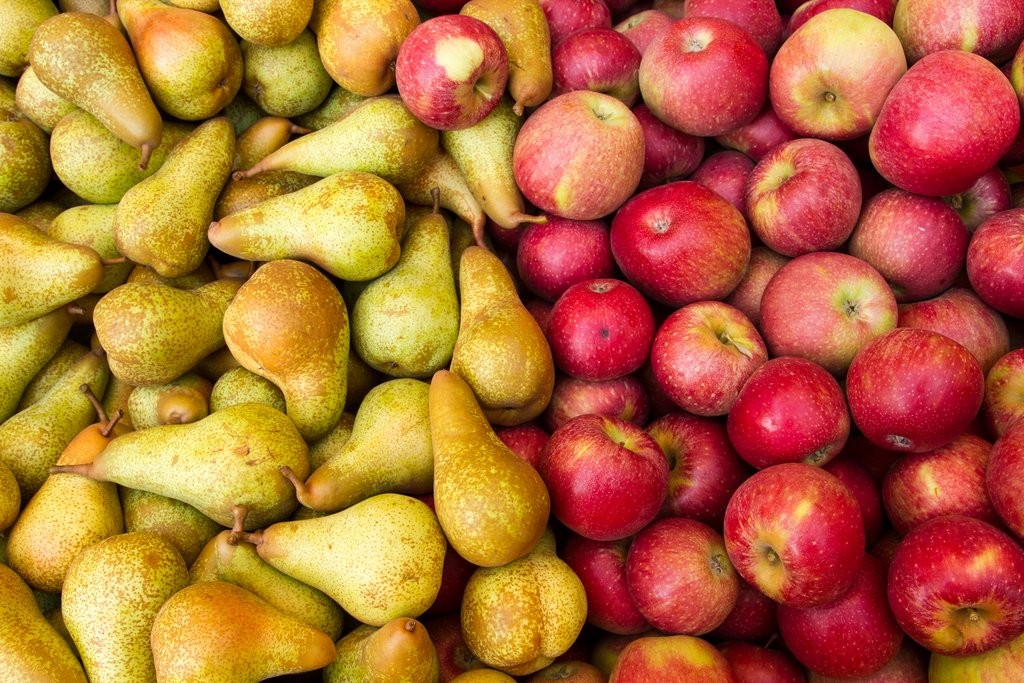
Glendoick Apple Stocks 1st September 2024
Apple (Malus) Ballerina Samba MM106 £55.00
Apple (Malus) Bramley 20 M26 £55.00
Apple (Malus) Discovery 10l MM106 £55.00
Apple Discovery MM106 7.5ltr £45.00
Apple (Malus) Discovery 10l M26 £55.00
Apple (Malus) Egremont Russet M26 £55.00
Apple (Malus) Egremont Russet MM106 £55.00
Apple (Malus) Fiesta M26 £55.00
Apple (Malus) Fiesta MM106 £55.00
Apple (Malus) James Grieve 10l M26 £55.00
Apple (Malus) James Grieve 10l MM106 £55.00
Apple James Grieve MM106 7.5ltr £45.00
Apple (Malus) Katy MM106 £55.00
Apple (Malus) Katy M26 £55.00
Apple (Malus) Limelight M26 £55.00
Apple (Malus) Red Devil M27 £60.00
Apple (Malus) Red Devil MM106 £55.00
Apple (Malus) Red Devil M26 £55.00
Apple (Malus) Red Falstaff M26 £55.00
Apple (Malus) Red Falstaff MM106 £55.00
Apple (Malus) Red Falstaff M27 £60.00
Apple (Malus) Red Windsor MM106 £55.00
Apple (Malus) Red Windsor M26 £55.00
Apple (Malus) Rosette MM106 £55.00
Apple (Malus) Rosette M26 £55.00
Apple (Malus) Scrumptious M27 £60.00
Apple (Malus) Scrumptious M26 £55.00
Apple (Malus) Scrumptious MM106 £55.00
Apple (Malus) Spartan MM106 £55.00
Apple (Malus) Spartan M26 £55.00
Apple (Malus) Sunset M26 £55.00
Apple (Malus) Sunset MM106 £55.00
Apple (Malus) TICKLED PINK Baya Marisa M26 £55.00
Apple (Malus) TICKLED PINK Baya Marisa MM106 £55.00
Apple (Malus) Winter Gem M26 £55.00
Apple (Malus) Worcester Pearmain MM106 £55.00
Apple (Malus) Worcester Pearmain M26 £55.00
Prunus a Stella 7.5ltr £45.00
Prunus Victoria 7.5ltr £45.00
Pyrus Conference 7.5ltr £45.00
Pears
Many pears fruit well in Scotland, provided the blossom is not frosted, though in wet summers and high rainfall areas, trees do suffer from severe scab which will need to be sprayed. Some are self-fertile or partly self-fertile (marked), others require a pollinator. Quince A rootstocks produce large trees up to 3-4m while Quince C is a somewhat dwarfing stock giving a slightly less vigorous (2-3m) tree. In colder areas, pears may need the warmth of a south-facing wall to protect blossom and to ripen fruit fully.
The following are the 6 best selling and best peforming pears. You need two varieties for fruit set.
‘Beth’ (self-fertile) early, conical, pale yellow, juicy, sweet, compact tree, heavy cropper from a young age, a Jim McColl choice,
‘Beurre Hardy’ round conical fruit, light green skin, tender, sweet, juicy flavour, vigorous, and upright, a poor pollinator, needs a warm site and takes a few years to bear fruit,
‘Concorde’ # (partly self-fertile) good flavour, compact, heavy cropping, Willie Duncan’s choice as the most reliable, and a Jim McColl pick,
‘Conference’ # (self-fertile) the most popular pear in the UK, and perhaps the best for Scotland as it sets fruit even if frosted, good flavour, fairly compact, heavy cropper,
‘Doyenne du Comice’ the best flavour of all, but needs a warm, sheltered site and a pollinator, vigorous, scab-prone,
‘Williams’ Bon Chretien’ yellow skin, juicy flesh, good for bottling, spreading habit, heavy cropper, A new sport of this, with red skin,
Pear Stocks Autumn Winter 2024
Pear (Pyrus) Beth Quince A £55.00
Pear (Pyrus) Concorde Quince A £55.00
Pear (Pyrus) Concorde Quince Eline ® £59.00
Pear (Pyrus) Conference 10l Quince A £55.00
Pear Conference 7.5ltr £45.00
Pear (Pyrus) Doyenne du Comice Quince A £55.00
Pear (Pyrus) Williams Quince A £55.00
Plums, Damsons and Gages
Plums generally fruit well in Scotland but can be short-lived due to canker and silver leaf. They are heavy-cropping from a young age, and all listed below are self-fertile, so you only need one. It is most practical to grow them against a wall, to avoid breakage from heavy fruiting and for ease of netting from birds and wasps. It may be necessary to thin fruit, to avoid exhausting the tree and starting a bumper/barren biennial cropping cycle. Prune in summer if required after fruit set, but not in winter, due to disease. The commonest rootstocks are ‘St Julien A’ for a full sized plum (3-4m) and ‘Pixy’ for a semi-dwarf tree (to around 2.5-3m).
Plums
‘Czar’ # sharp flavour, usually used for cooking, early fruiting, tough, spring-frost and shade-resistant, susceptible to silver leaf,
‘Marjorie’s Seedling’ sweet but not the best taste, good for cooking, late ripening, long-lasting fruit, vigorous and upright, heavy cropping,
‘Opal’ reddish-purple fruit, tastes like ‘Victoria’, but less susceptible to bacterial canker, so we would recommend this instead.
‘Victoria’ (Victoria plum) the most popular plum, heavy cropping, but very susceptible to canker, so often short-lived.
Damsons have smaller fruit but are tougher and more disease resistant, and can be used as a windbreak or hedge. They need to be cooked and made into jam, wine or gin. ‘Farleigh Damson’ (self-fertile) the most reliable fruiter for Scotland.
Gages are not as successful as plums in Scotland as they need more shelter and warmth, and they may take years to start fruiting and then may not fruit every year. Apart from perhaps the Moray Firth coast (and other localised suntraps), we would not recommend them for the Northern half of Scotland. ‘Cambridge’ (self-fertile) is probably the best.
Victoria Plum Pixie rootstocks £79.99
Victoria Plum 7.5ltr £45.00
Pyrus Conference 7.5ltr £45.00
Damson Merryweather £65
Gage Cambridge £65
Cherries
These are usually fan-trained against a wall, so they can be easily netted against birds. For smaller gardens, we would recommend buying cherries on ‘Gisela 5’ rootstocks as they fruit younger and more heavily on a less vigorous tree/bush. For a larger tree, buy trees on the ‘colt’ rootstock. Whatever the size, cherries need a rich, fertile soil, and regular feeding. All the cherries below are self-fertile. They don’t require pruning unless you need to restrict growth, just tie in the young branches. ‘Morello’ # dark red cooker, very hardy, ‘Stella‘ # dark red sweet, eating cherry, fruit inclined to split, ‘Sunburst’ sweet black fruit, ‘Sweetheart’ dark red, late, heavy fruiting, ‘Lapins’ (syn. Cherokee’) sweet, dark red, this recent introduction is Willie Duncan’s choice as the best cherry for E. Scotland, good flavour, heavy cropping and seldom splitting.
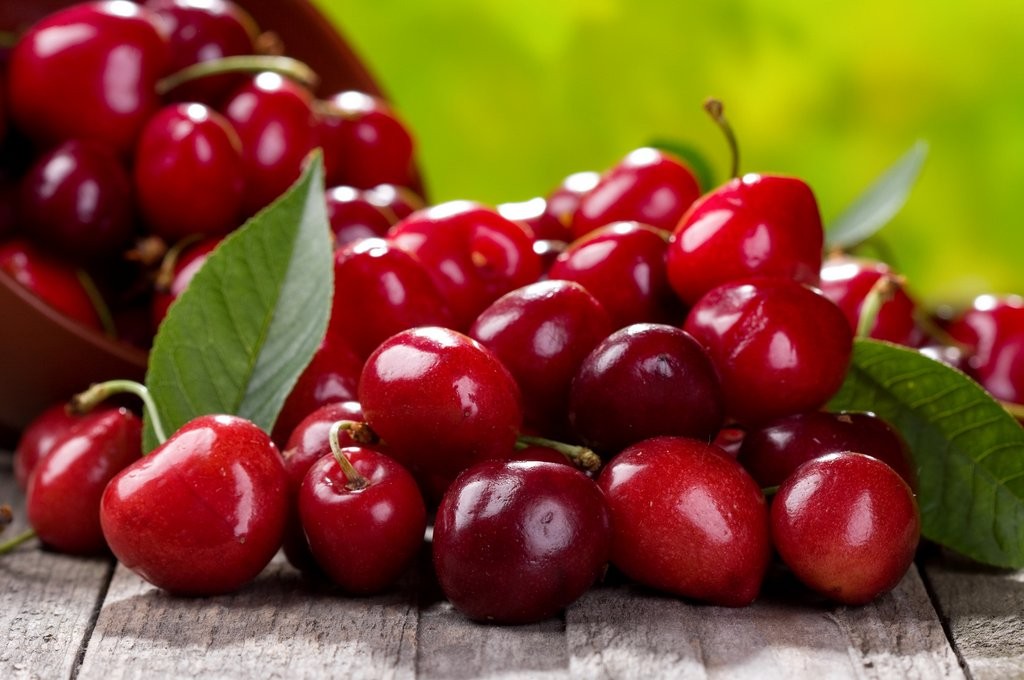
Cherry (Prunus) Lapins Cherokee Colt £59.00
Cherry (Prunus) Morello Colt £59.00
Cherry (Prunus) Stella Gisela 5 £65.00
Cherry (Prunus) Stella Colt £59.00
Cherry (Prunus) Sunburst Colt £59.00
Cherry (Prunus) Sweetheart Colt £59.00
Cherry (Prunus) Stella (colt) 7.5ltr £45.00
Apricots, peaches, figs, and other tree fruit
Scotland’s summers are too short and too cool for most other tree fruit to crop reliably outdoors, and are best indoors. That said, recent hot summers have meant that we have seen figs ripening in Aberdeenshire and grapes at House of Pitmuies, Angus, so never say never. But in our experience the taste of outdoor Scottish apricots, peaches, and figs do not match those from hotter climates. If you want to try them, find a suntrap on a South-facing wall, and use fan-trained trees.
Soft Fruit (Berries and Currants)
Until recently, Perthshire and Angus boasted the world’s largest concentration of strawberry and raspberry production, much of which was canned or made into jam in Dundee. Berry picking was an annual ‘holiday’ for many city dwellers.
Strawberries
Strawberries do well in Scotland, and usually taste much better from the garden as you can pick them ripe and eat them straight away, whereas supermarket strawberries are often picked green. The traditional wisdom is to plant runners in late summer/autumn and container-grown plants in autumn or spring, and then not to let them fruit in the first season. Take off the flowers and runners to obtain a really dense plant, which will fruit well the following season (up to 1kg). They need to be in plenty of sun, and in not too acidic a soil (some may need a dose of lime), and you may need to net ripening fruit to keep birds and children off! Rain is the great enemy, as it rots the fruit. Use a mulch of straw, black polythene or strawberry mats to keep the fruit out of contact with the ground (where rots can set in), or grow them in raised beds or containers. Vine weevil grubs are a serious root-eating pest.
After three or four years, fruiting will decrease and it is best to dig out and the plants and start again. The flowers can be frosted in cold inland gardens, resulting in no fruit, so you may need to cover them.
These days most people eat nothing but ‘Elsanta’ which the supermarkets love as it lasts well on the shelf. A perfectly good fruit if picked ripe, but all too often it is picked green and ripened inside, which means it tastes mildly of turnips. ‘Cambridge Favourite’ is probably the most widely grown older variety, with good flavour, mid-season and heavy cropping, but prone to virus. Slightly later ripening is ‘Pegasus’ which many believe to the best of the recent introductions. If you plant a mixture of varieties you can have a long season of fruit. Varieties known as ‘everbearers’ or ‘perpetuals’ fruit into July and August, but are less hardy, produce smaller fruit, and only fruit well for 2-3 years.
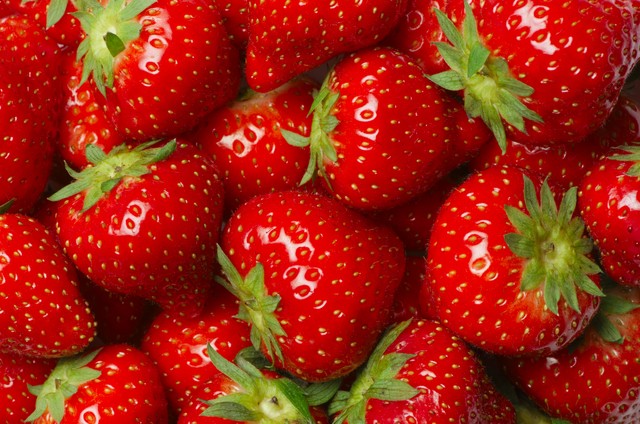
Raspberries
An excellent crop for Scotland, many of the best known (including ‘the Glens’) were raised at the SCRI near Dundee. Raspberries fruit in summer, most fruiting on canes produced the previous year except for one or two late/autumn varieties such as Autumn Bliss which fruit on canes from the current year. Rasps need well-drained soil, and are often planted on a ridge if soil is heavy. They are generally planted with posts and wires to support them, normally in single or double rows. Plant canes c. 40cm apart. When newly-planted, cut down old canes to ground level in spring, then cut fruited canes to ground level again when all fruit is picked. They should be fed at planting time and then annually (general fertilizers like Growmore or rose fertilizer are good). Raspberries succumb to virus and should be rotated after c.10 years. Replant new stock in another part of the garden.
‘All Gold’ autumn-fruiting yellow,
‘Autumn Bliss’ late-fruiting (August) on current season’s wood, needs a sheltered sunny site, ‘Glen Ample’ spine-free, mid-late July,
‘Glen Moy’ spine free, good flavour,
‘Glen Prosen’ spine-free, needs rich soil, a good all-rounder,
‘Glen Doll’ mid season, with late bud break, so useful for cold gardens, and good insect and disease resistance,
‘Octavia’ late July,
‘Tulameen’ late July, long-season, good flavour.
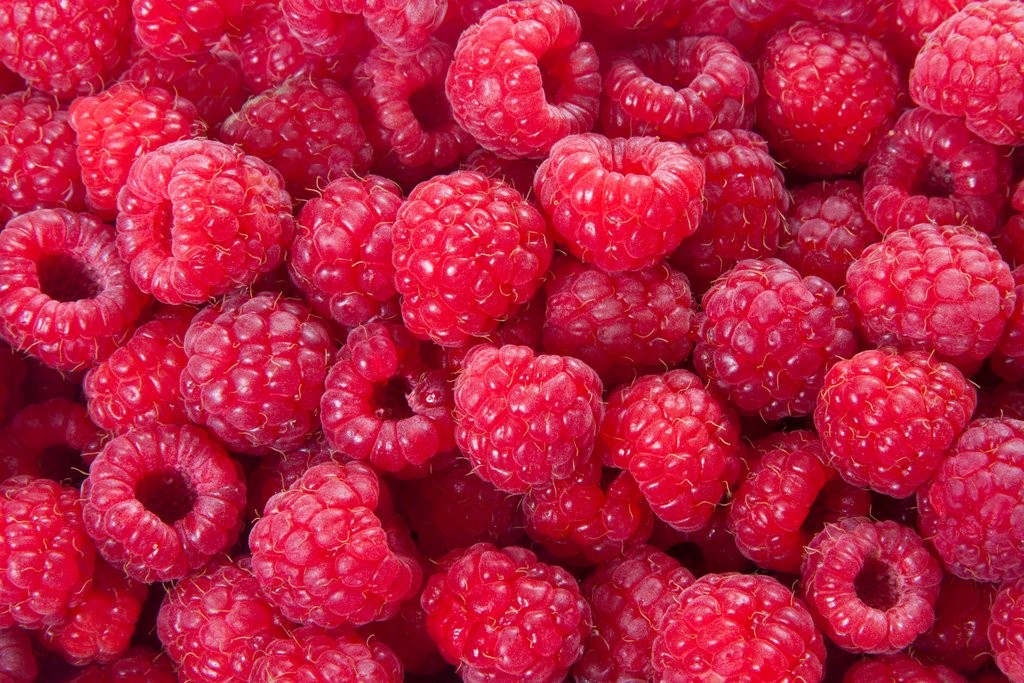
Blackberries (brambles), and hybrid berries
Brambles of provide free fruit all over Scotland in late summer and early autumn. There are thornless versions, which you may prefer to grow in the garden as they are easier to pick.
‘Black Satin’, ‘Loch Ness’, and ‘Oregon Thornless’ are all good, but the flavour is not as fruity as the wild ones. Alternatively consider one of the hybrid berries, mainly crosses between a bramble and raspberry:
‘Loganberry’ H5 thorny and best for cooking, ‘Thornless Variety’ as it sounds,
‘Tayberry’ H4 reddish-purple, larger and sweeter, can be damaged by cold winds, bred at the SCRI.
Currants
95% of all blackcurrants in the UK end up in ribena and similar juices. But they do of course have other uses, eaten fresh, pulped, or made into jams and sauces. Blackcurrants are pretty tough, but are usually grown in netted cages to keep birds off. Mildew can cause problems. Most varieties were bred at SCRI, near Dundee and are named after Scottish peaks: ‘Ben Alder’ small, juicy berries, resistant to mildew,
‘Ben Connan’, large fruit, ‘Ben Lomond’ late-flowering, so good in frosty areas, some mildew, ‘Ben Sarek’ large berries, ‘Ben Tirran’ late flowering, large fruit.
Redcurrants are less popular, but fine for cooking, in jams, jellies, and summer pudding, and for setting jams of other fruit. The old favourite is ‘Laxton’s no. 1’ which is early fruiting (July). ‘Red Lake’ a little later fruiting.
White currants, usually ‘White Versailles’ are not widely grown but ripen in July-August and are good for pies and jams.
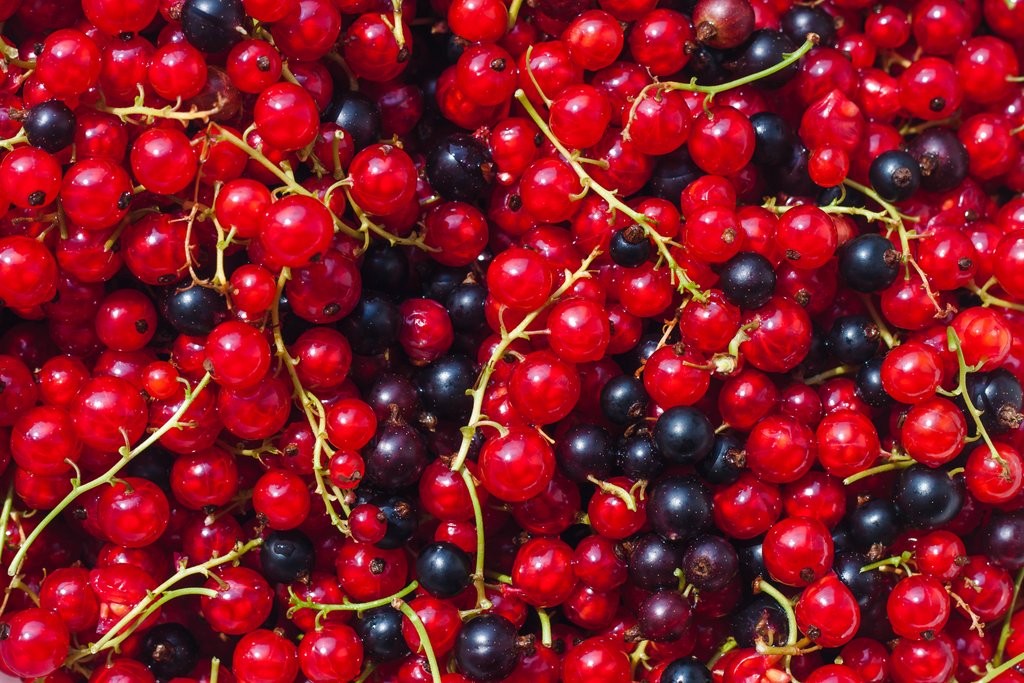
Gooseberries
H5 (1 x 1.5m) Amongst the hardiest of all fruit, you should be able to grow gooseberries almost anywhere in Scotland. (Their thorns also make them one the toughest fruit to pick – my worst summer job ever was picking gooseberries for a week – I earned more scratches than pennies – RC-M). They like a fertile, well-drained but not dry soil and will fruit in partial shade, even on a north wall. You may need to net fruit against birds from May-July/August, and some recommend thinning fruit in May. Prune in winter, or after fruiting is finished, and remember to wear thick gloves. The main troubles are mildew (turns leaves white), and sawfly larvae (strips the leaves).
‘Careless’ pale fruit, some disease resistance, ‘Invicta’ compact and free-fruiting, can be container-grown, ‘Leveller’ can be eaten raw when very ripe, very good taste, ‘Pax’ almost thornless, mildew-resistant, ‘Whinham’s Industry’ red fruited, the best variety for a shady site, can suffer from mildew.
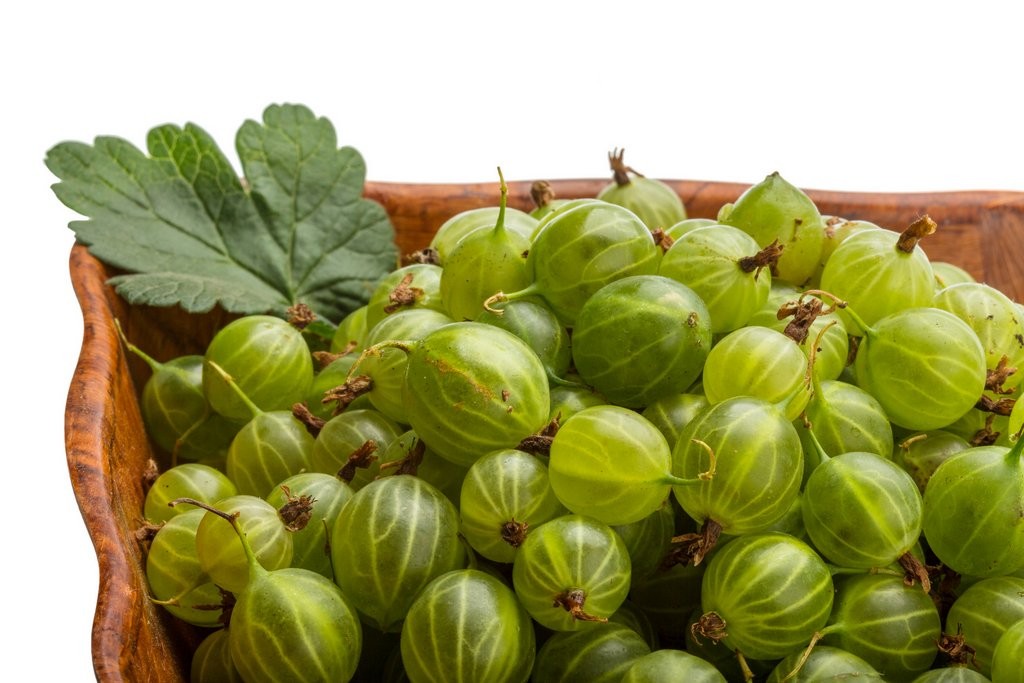
Blueberries
(Vaccinium corymbosum)
H4-5 (1.5m) Handsome deciduous shrubs with white flowers in spring, blue berries in summer, and the added bonus of fine autumn colour. Blueberries like well-drained, acid (peaty) soil. Netting against birds in the fruiting season, and planting more than one variety ensures good berrying. As plants mature, winter pruning will keep them in shape. Dont let them dry out for the first few years. Then they are generally fine just left to themselves. Cut out old wood from time to time.
‘Bluecrop’ by far the most popular variety. Large, light blue berries with good flavour, orange autumn colour, ‘Grover’ late fruiting, ‘Jersey’ keeps well, good fresh or cooked, ‘Patriot’ vigorous, hardy, excellent flavour.
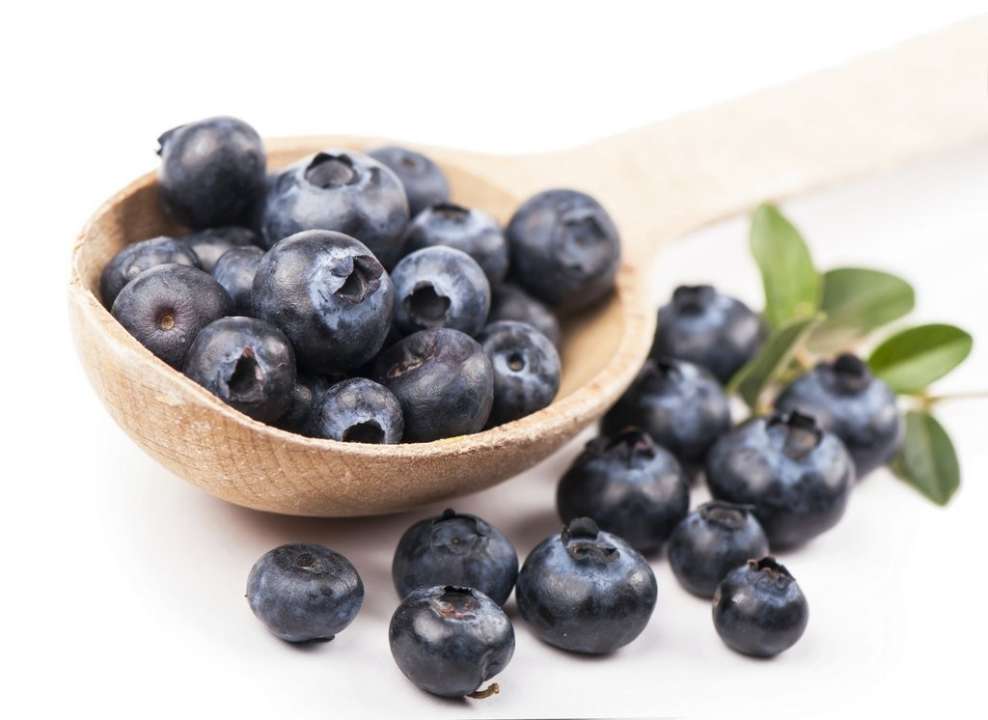
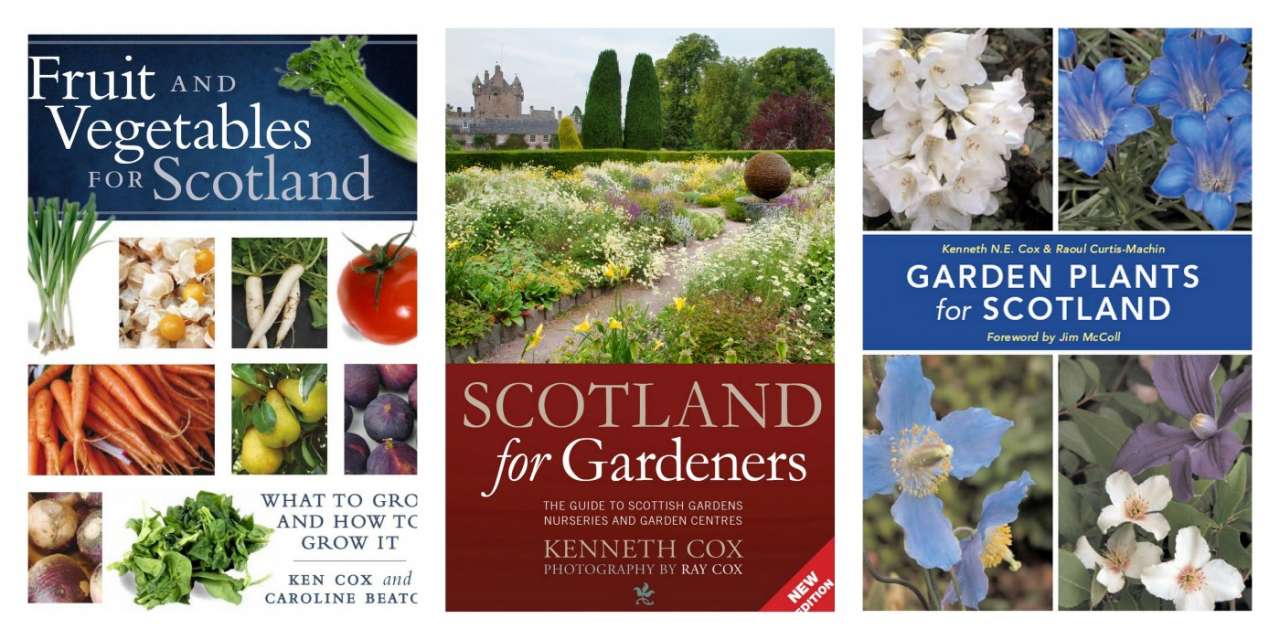
The information on this webpage is adapted from Kenneth Cox's books Garden Plants for Scotland and Fruit and Vegetables for Scotland. Kenneth Cox in MD of Glendoick and selects the range of fruit trees and bushes on sale at Glendoick.
Apple Pollination You need two different apples to set fruit as they need to be pollinated. An apple in a next door garden will do. Crab apples will also pollinate apples.
Apricots, peaches, figs, and other tree fruit
Scotland’s summers are too short and too cool for most other tree fruit to crop reliably outdoors, and are best indoors.
That said, recent hot summers have meant that we have seen figs ripening in Aberdeenshire and grapes at House of Pitmuies, Angus, so never say never.
But in our experience the taste of outdoor Scottish apricots, peaches, and figs do not match those from hotter climates.
If you want to try them, find a suntrap on a South-facing wall, and use fan-trained trees.
How to Plant a Fruit Tree
- You’ll need a spade, a tree and normally a stake and tree tie and if there are rabbits or deer, a tree guard.
- Dig a hole 2-3x as wide as the pot and a little deeper than the pot. Loosen the soil at the bottom of the hole with a fork. If the soil is poor, then add some new compost to the planting mix.
- Thoroughly soak the root ball in water before planting - standing it in a bucket is good for this and tease out the roots so they can grow into the soil.
- Place the root ball in the hole the top of the rootball is level with the soil surface.
- Refill the hole and firm the soil around the tree, with a boot, ensuring trunk remains vertical.
- Use a tree guard (metal or plastic protection to prevent deer, rabbits or hares (or strimmers) damaging the bark.
- Most trees will need staking. Either use a short stake at a 45 degree angle or for a top grafted or delicate tree, use a taller stake sited parallel to the trunk. Put the stake on the windiest (south westerly) side of the tree. Attach a ‘figure of 8’ tie from the tree to the tree stake. (see photo for how to do this)

